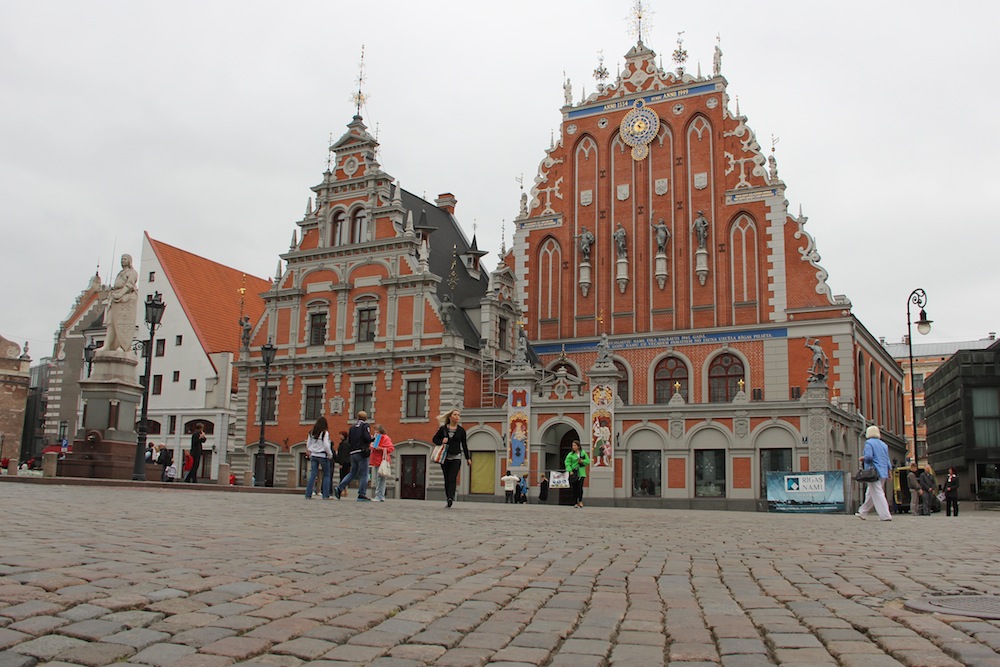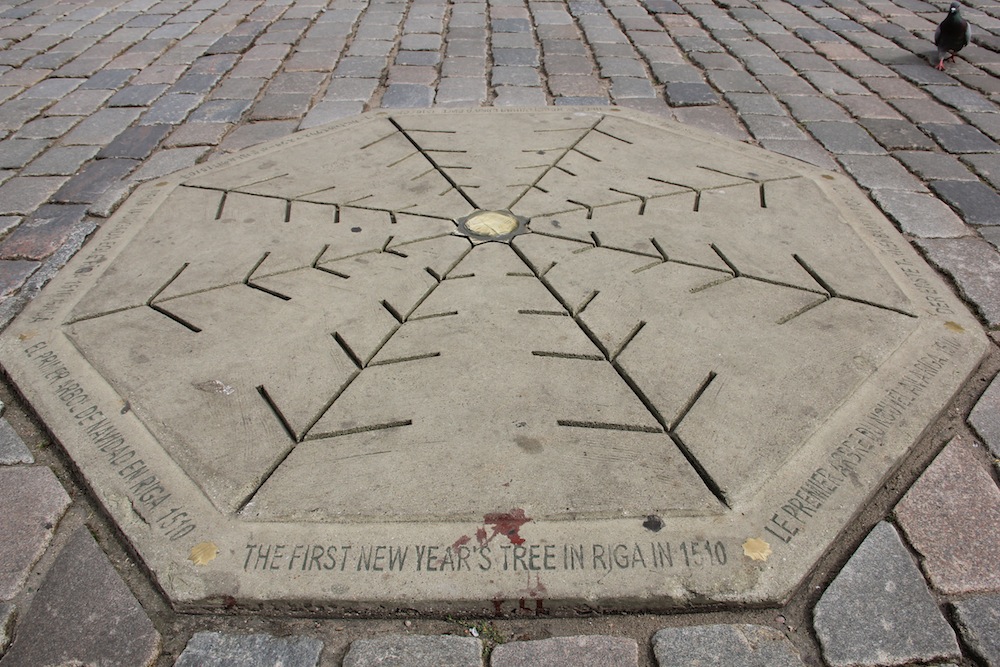A few posts ago, I informed you of the vicious yet under-reported marzipan war between Estonia and Germany. This week, I’m sorry to report that Germany is at it again. This time, the red, yellow, and black seems to be engaged in a war-of-words with Latvia. The prize? Worldwide fame and recognition as the rightful inventor of one of the most wonderful of Christmastime traditions, the Christmas Tree (see also: booze at breakfast, turkey dinners, confectionary items that combine chocolate and alcohol, and sleeping in).

If you’re like me, you’ve probably lived your entire life without pondering the origins of this tradition, decorating trees year-after-year like a Christmastime zombie, content to go through the motions droning “trees, trees” without really knowing why. You may vaguely recall having heard something about Germany (lies!), or have been satisfied with the simple predictability getting together and decorating the tree brought to your family’s Christmases: “Oh look, there goes Aunty Edna again with the eggnog. Remember last year when she blew chunks all over mom’s Rudolph sweater and then set the tree on fire?” Errr…maybe that’s just my family…I mean, no…that’s not like my family. Not at all.
On our recent trip to Riga, Latvia, we discovered a unique story from history that no one seems to know – not even the History Channel. It’s the story of the origins of the Christmas tree, and much like your my Aunty Edna, it involves drunken debauchery and throwing caution and your sense of personal safety to the cold December wind. Like many of the historical facts I know, this gem first got into my head via a guidebook. According to it, the first Christmas Tree was erected (tee hee…erected!) on Christmas Eve in Riga in 1510. A drunken gang of bachelor merchants (the Blackheads) slew a great pine tree and brought it to their clubhouse, adorning it with flowers while — I can only assume, based on what happened next — imbibing in some celebratory drinks. At the end of the night, they did what any self respecting group of drunk, single men would do, and they set the tree on fire, watching it burn to the ground with drunken merriment.
This — sans the pyromania — marked the beginnings of the tradition we still love 500 years later. From this drunken night in Riga, it spread around the globe.


I’d be lying if I said Geoff and I didn’t fall completely in love with this tale of Christmas trees past — drunken travelers with axes, ill-conceived yet grand gestures, setting things on fire — what’s not to love? We spent hours one afternoon searching for Christmas tree ornaments as gifts for family back home (note to Riga’s tourism authority and purveyors of kitschy souvenirs: you guys are missing out on a major cash cow by not working this story into your marketing materials and souvenirs), finally finding a store with a few lone ornaments among a sea of key chains and miniature pottery houses. The entire story adds an air of the romantic to the Riga experience: to be standing in the very friggin’ place that the friggin’ Christmas tree was friggin’ invented. It’s friggin’ awesome!
When we returned home from the trip, I did a Google search for the history of the Christmas tree to get a bit more information for this post, and was surprised — nay, SHOCKED — by what I discovered:
The custom of the Christmas tree developed in Germany? GERMANY? Was this a case of Riga getting a bit too cocky with its tourism campaign, or was Germany at it again, trying to take credit for inventing something so obviously originating from further afield? Feeling betrayed by the Interweb, I did what any reasonable person would do: I went to the library and collected an impressive collection of Christmas Tree books with titles such as “When Santa Was a Shaman” and (the less imaginatively titled) “The Christmas Tree Book.”
According to Phillip V. Snyder, who is a kind of big deal in the competitive academic field of Christmas Tree Scholarship, the earliest historical references to the Christmas Tree are from 1510 and 1514, in Riga and Reval (modern day Tallinn), respectively. Both references mirror the story we read, and involve drunken merchant travelers finding and decorating a tree on Christmas Eve. I know what you’re thinking – Riga: 1; Germany: 0.
So what the hell is Germany on about, then? Germany does deserve SOME credit. The afore mentioned drunken merchants? Many of them were German. The first record of people having a Christmas Tree similar to the ones we have today (you know, placed in the living room, decorated with papers and candies and apples)? Also from Germany: in 1605, a traveler recorded seeing these trees in his travel diary. Finally — and this is the part that Germany really seems to lean on — it was in Germany that the whole tradition really took off: there are records of Christmas trees for sale in Alsace’s market (then part of Germany, now part of France, but you don’t hear France going on and on about it) as far back as 1531, as well of records of signs from German forests either prohibiting the taking of trees for Christmas or limiting the size of tree taken.
So what’s the point of this post? The moral of this story? As per usual, there isn’t one. Except maybe, if you want to travel to the place that invented the Christmas tree, you should maybe include Riga AND Germany in your itinerary.
Thanks to Phillip V. Snyder’s The Christmas Tree Book for settling the score. No thanks to Wikipedia and the general population of the Internet, for spreading their Christmas LIES! Also, no hard feelings to Germany — I’m just joshing you guys, I’m actually a big fan!


Ahhhh the good old days when drunk single men would chop down trees and decorate them with flowers for a laugh. Now it’s all traffic cones lewd gestures.
Neeh it gets even trickier than that. Recent evidence shows the same bunch – So the Brotherhood of Blackheads – carried the Christmas Tree out to the town hall square already in 1441, but not in Riga – in Tallinn!